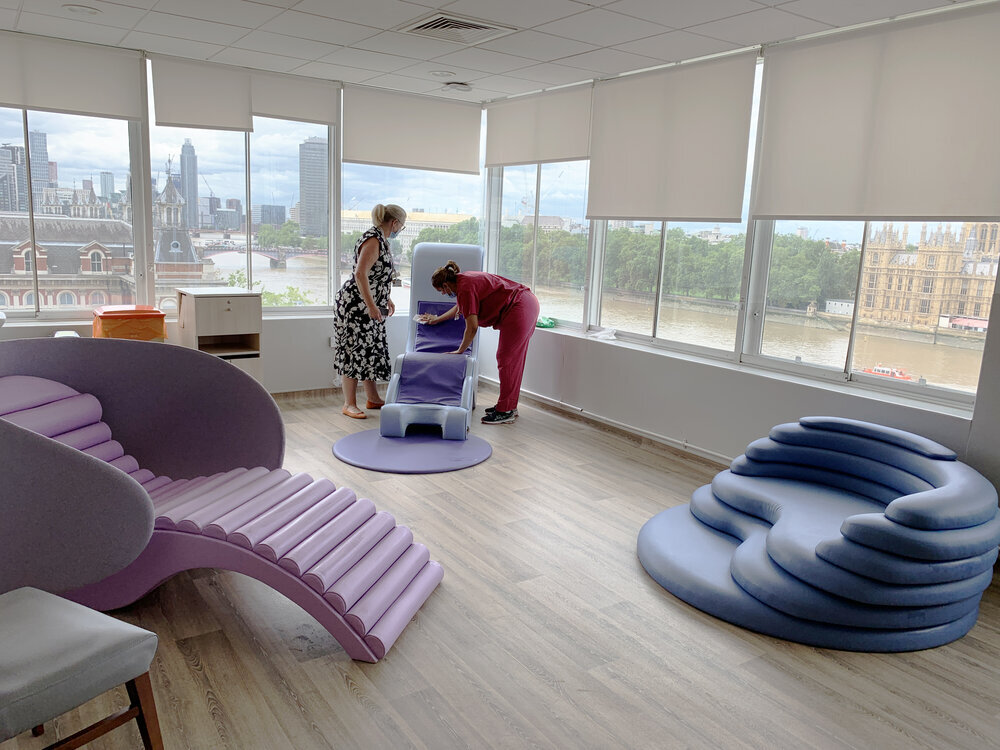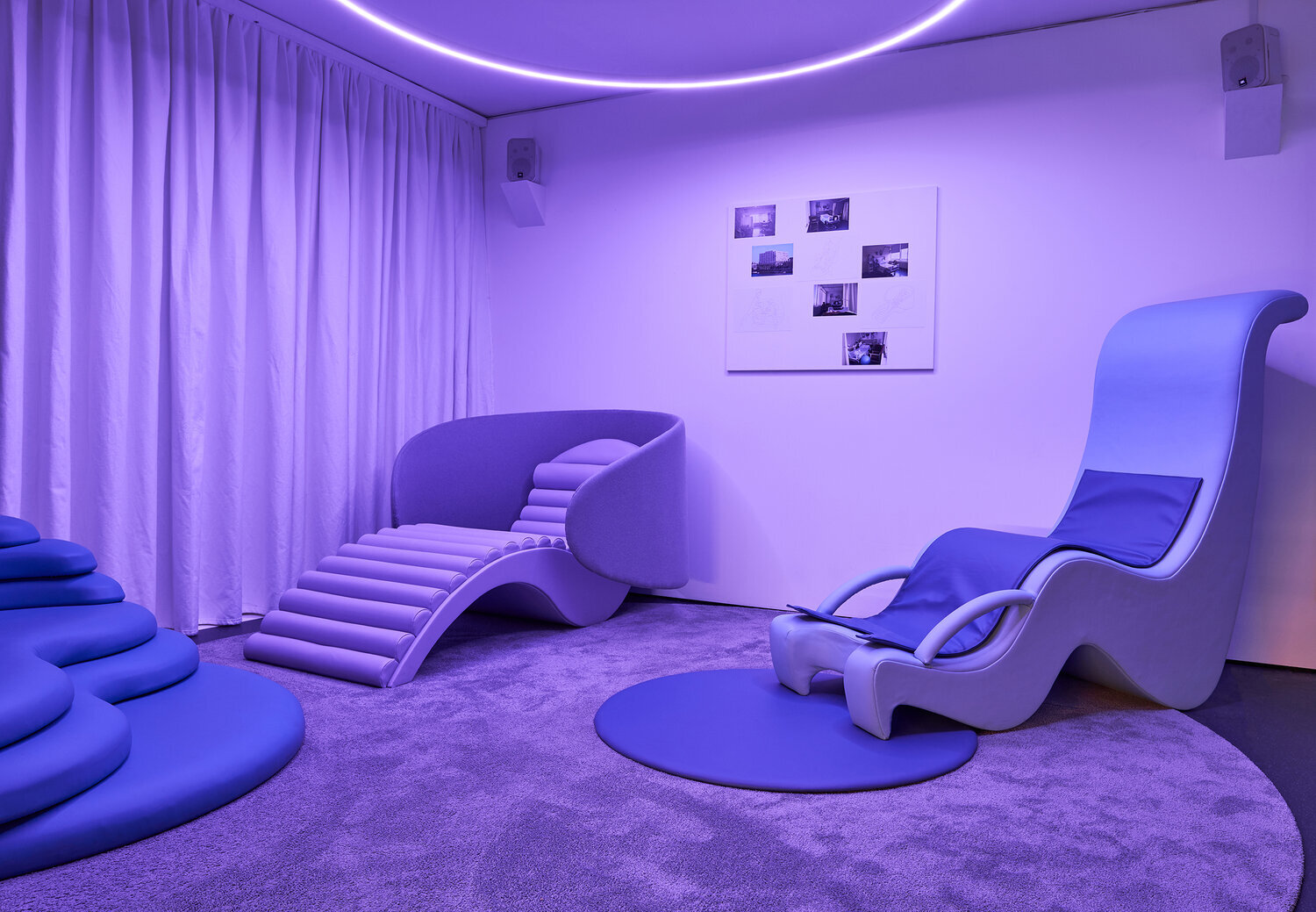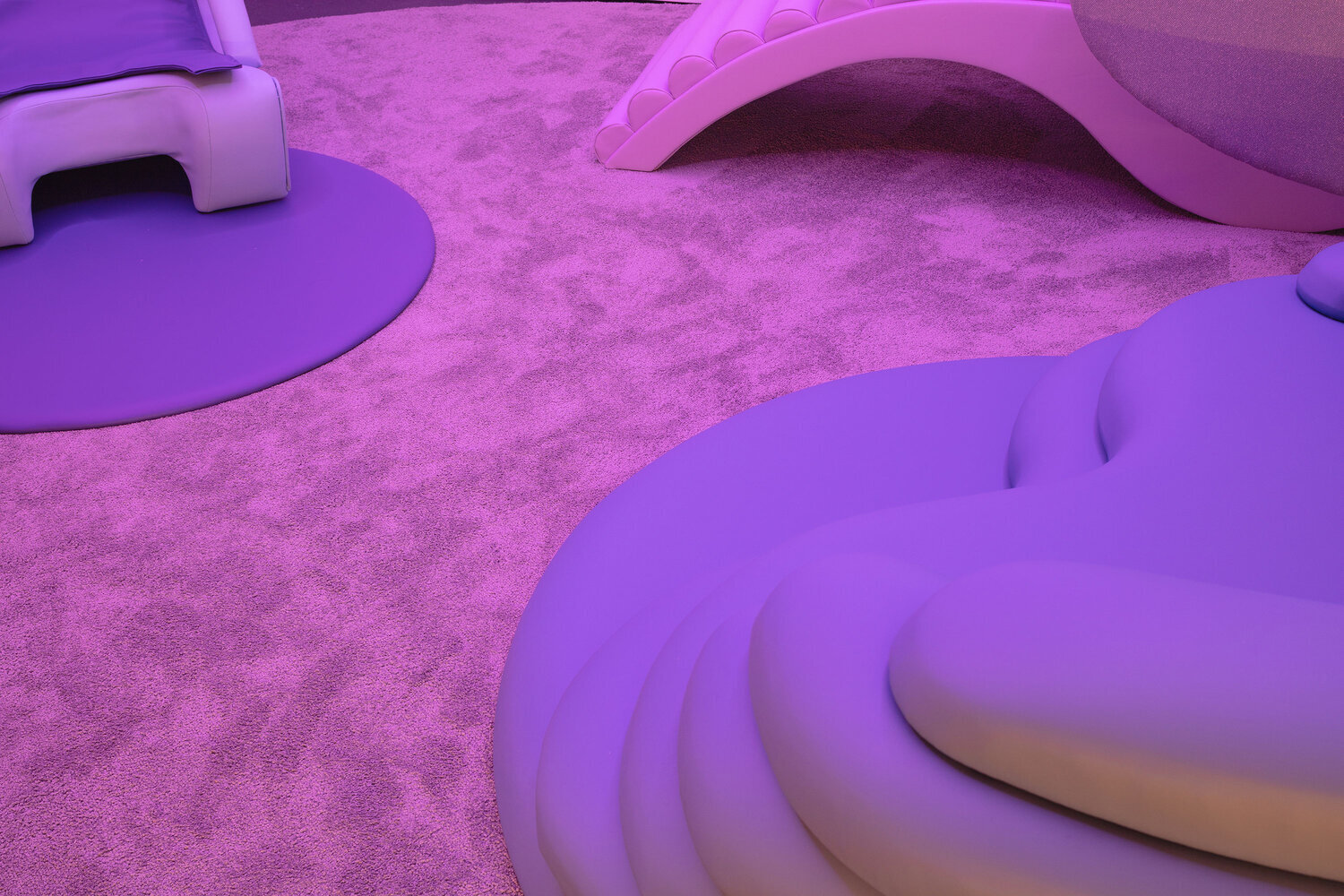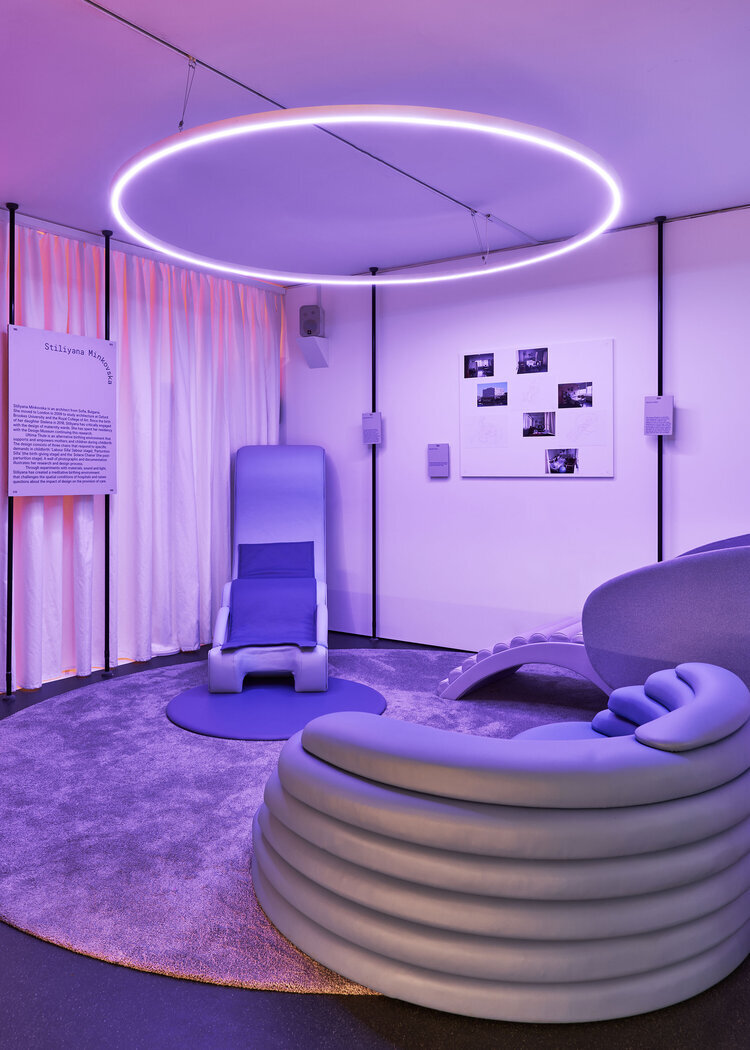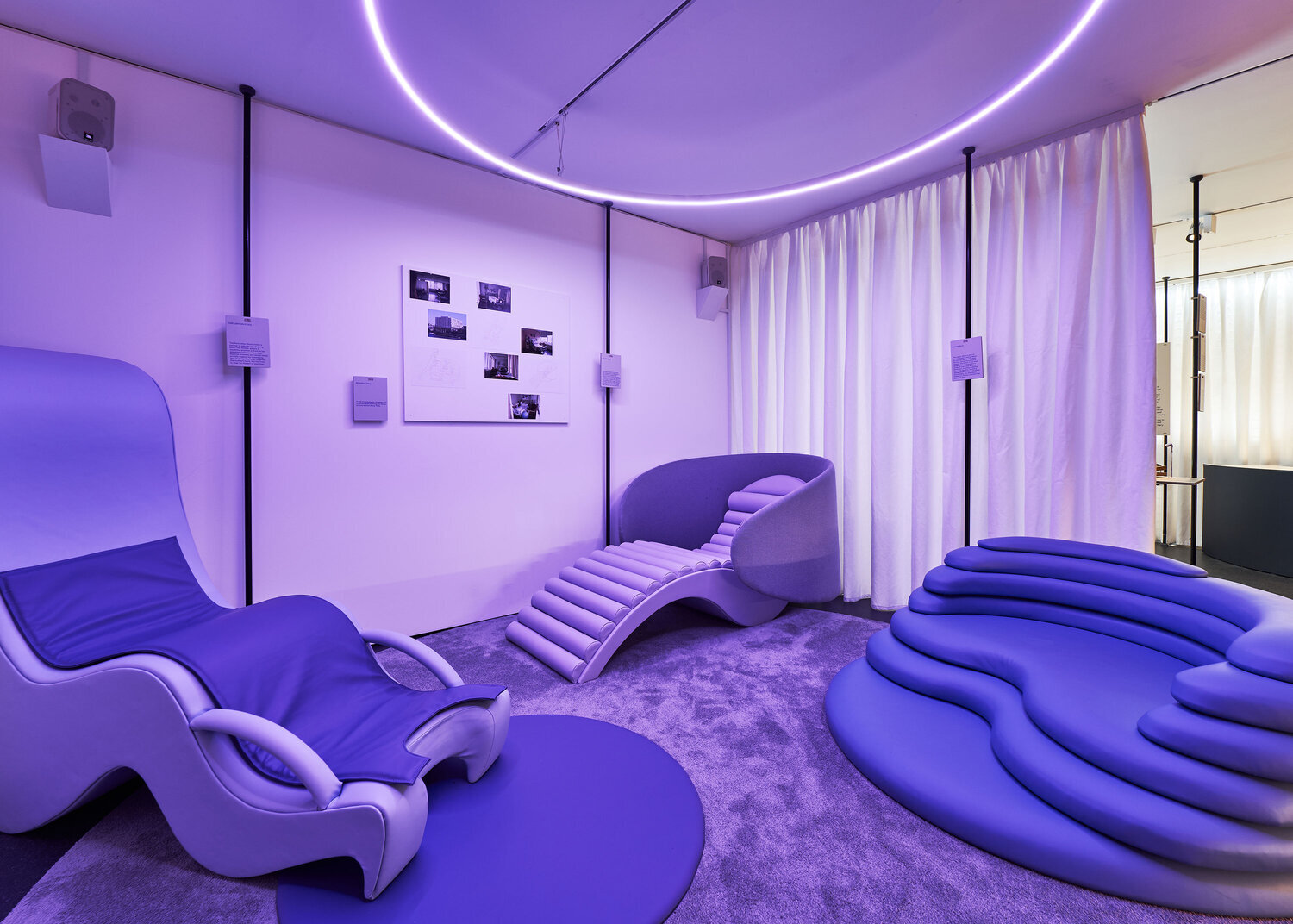STILIYANA MINKOVSKA
Ultima Thule, Alternative Childbirth Environment Designed Space, 2020
Ultima Thule is a project that interrogates the design landscape of childbirth within a hospital setting. The term Ultima Thule is derived from a Latin phrase meaning ‘a distant unknown region’ or ‘beyond the known world’.
My own voyage into motherhood came into focus during childbirth, when physical sensations gave way to an interstellar experience. As my body lay supine on the delivery table, my mind became fluid, and I found respite through exploring the farthest imaginable place: Ultima Thule. This work captures my position as a designer and architect, but also as a mother who felt like a medical object during the birth of my daughter Stelena. These designs address the challenges that I experienced at that time. Through the project, I recognise that birth is not a universal or monolithic experience, hence the flexible nature of the designs that I am proposing.
Ultima Thule presents an alternative to the hospital birthing environment – a space that I feel has been designed to allow for certain harmful procedures and techniques. My research reimagines the technological and institutional elements of childbirth, and instead proposes a sanctuary-like environment for mother and child. In this space, the mother has greater control of delivery and reproductive health. Here, they can embody multiple roles, including that of parent, but also of partner.
Today, birth centres, labour wards, operating theatres and home environments seemingly aim for a nonclinical appearance to provide a calm setting for the expectant mother. During the primal period – which includes the foetal life, birth and a year after birth-giving – it is crucial for parent and baby to be in secure, private and human-centred surroundings.
Current hospital settings are devoid of many qualities that medical researchers have deemed necessary, such as privacy, sanctuary and comfort. Although they have developed techniques to hide the presence of technology and equipment, the spatial quality is not warm, womb-like, soft or female-centred. During my pregnancy, I yearned for a calm space, with a carefully chosen colour and lighting palette. I wanted to limit distraction and foreign stimulation, since researchers have demonstrated that doing so can lead to more melatonin discharge – otherwise known as ‘the darkness hormone’. This hormone works along with oxytocin to assist labour and delivery, and to reduce neocortical activity, which is key to physiological pain-reduction during labour.
While some women value giving birth in an open space where medical professionals are on standby, others value privacy. Through Ultima Thule, I have created a space that caters to this latter group. I have reduced direct lighting and encouraged warmer colours and materials. It is also crucial for the mother not to be cold, as warmth induces the release of oxytocin.
Ultima Thule provides a place where the mother and the baby can be together as one entity – their closeness remains for as long as they desire. Although some value the clinical nature of the hospital setting,
where technology and medical devices have a strong presence, I have designed an alternative space that prioritises material softness for those who desire it. This spatial quality reflects the womb, with its atmospheric and cosmic merit.
Stiliyana Minkovska is a transdisciplinary artist, whose work is highly influenced by the matrescence (entrance to motherhood). Her fascination with the processes of making and unmaking babies is reflected in her practice as an artist, designer and architect. Stiliyana specialises in maternal healthcare and well-being through spatial, service, user experience and interaction design. Currently, she is studying for a second masters degree in Healthcare & Design and her thesis project looks into the designscapes of childbirth. She recently became a mother for a second time in the hospital where both her children were born and where her triptych Ultima Thule was donated last year and currently used by pregnant and birthing women as well as the midwifery personnel.
